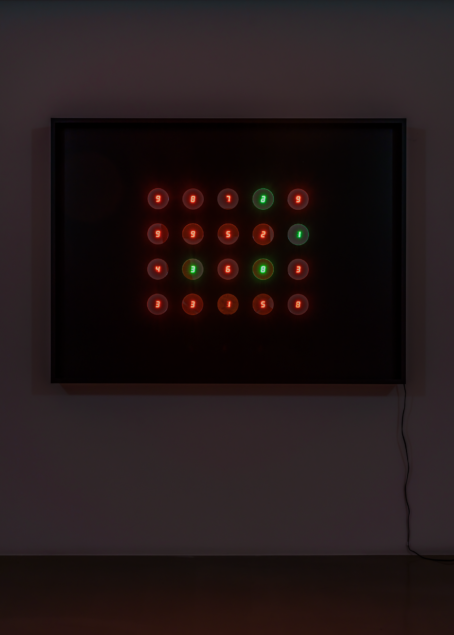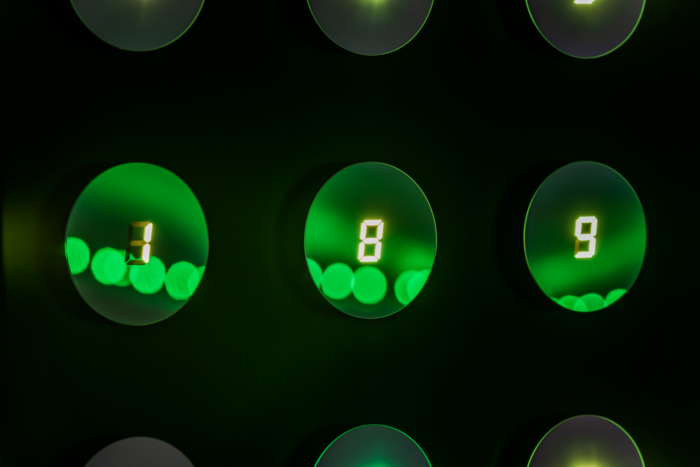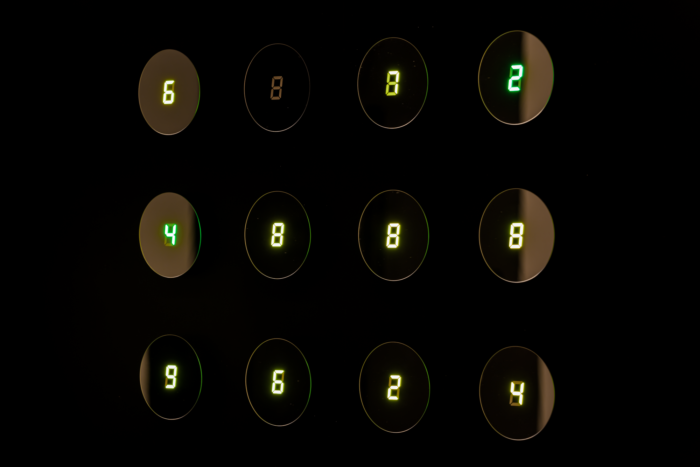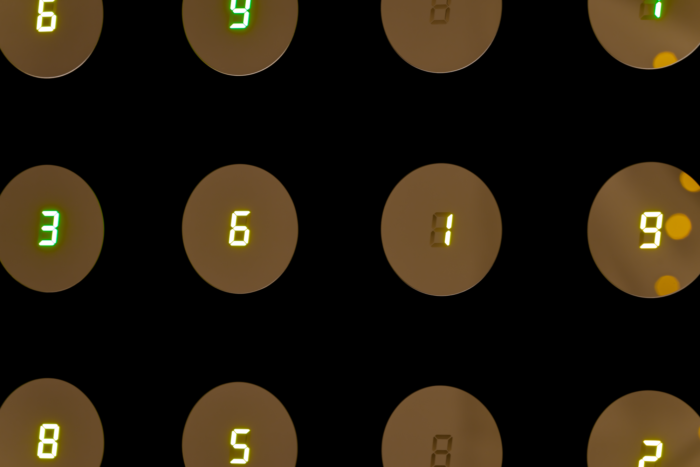Changing Time with Changing Self-Small Circle no.14

Changing Time with Changing Self-Small Circle no.8

Installation view at Gallery BATON, Seoul, Korea
Changing Time with Changing Self-Small Circle no.14
83 x 114 x 10 cm
Changing Time with Changing Self-Small Circle no.8
112 x 150 x 10 cm
Material:
Light Emitting Diode, IC, electric wire, mirror, wooden panel.
2020
Photo by Jeon Byung Cheol
With the development of science and technology, including AI, it is believed that our future is predictable, and if we can keep up with it, we will achieve steady development. However, in recent years, the climate change caused by global warming and the resulting natural disasters have made it impossible to predict the future. The economy, which has been calculated based on the probability theory, is in danger of experiencing wild swings and volatility that could lead to a global depression. And even regional conflicts, which will never end, cannot be controlled by science and technology. What is wrong with this? We still pride ourselves on the fact that nature is controllable, but in fact, the discovery of the "Chaos Theory" and the butterfly effect half a century ago (the flapping of a single butterfly's wings in Brazil might cause a tornado in Texas) has revealed that the world is actually not so simple that humans can control everything.
The work consists of ticking LEDs mounted on small mirrors (Mirror LED unit) that reflect the world around them as well as a portion of the viewer in a small field of view. They count down from 9 to 1, not displaying 0, and starts counting down again from 9. This represents energy. When it is counting, it represents "life," and 0 is a metaphor for “death.”
Such a Mirror LED unit represents a quantum. According to quantum theory, computational predictions do not hold at such a tiny scale as the quantum, and chance and probability dominate. It is said that changes occur in the relationship between a certain event and another certain event.
The light color of the Mirror LED unit is designed to represent different colors from time to time, although the overall tone is one color. The timing is different for each Mirror LED unit, but it is not controlled by the whole. Therefore, it is impossible to predict when and where the different colors will occur, and how they would appear in relation to the whole. With the audience's own reflection in the mirror and the surrounding environment changing, it creates even more complex relationships. In other words, this world and ourselves are not fixed, controllable entities but rather exist miraculously in close relation to chance and unpredictability. And that is the state of nature.
Miyajima hopes this work would provide an opportunity to think about the world and ourselves.


